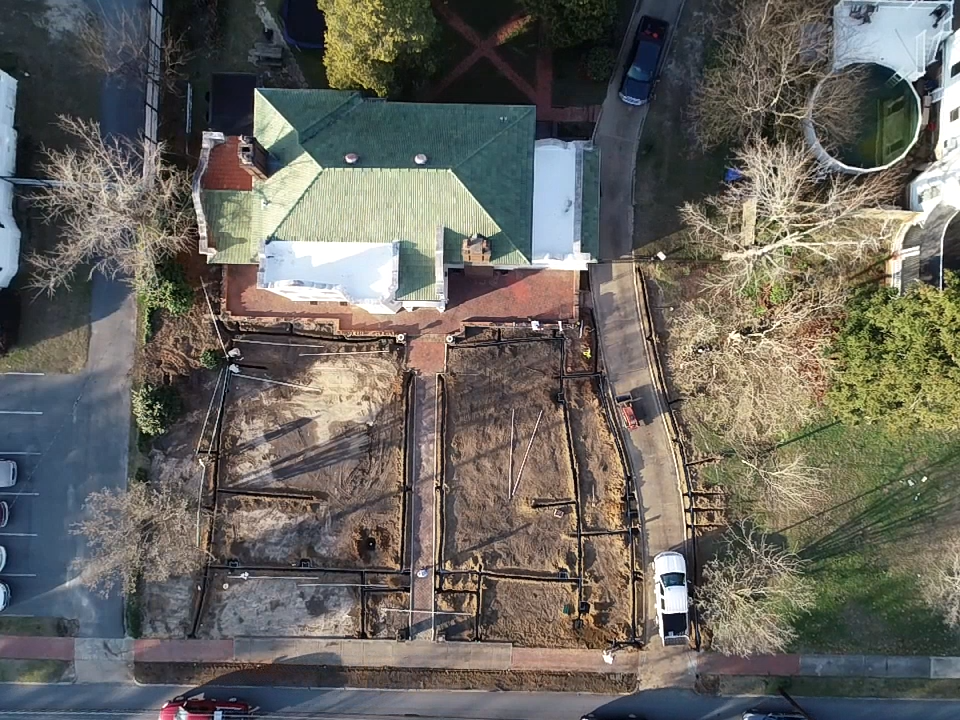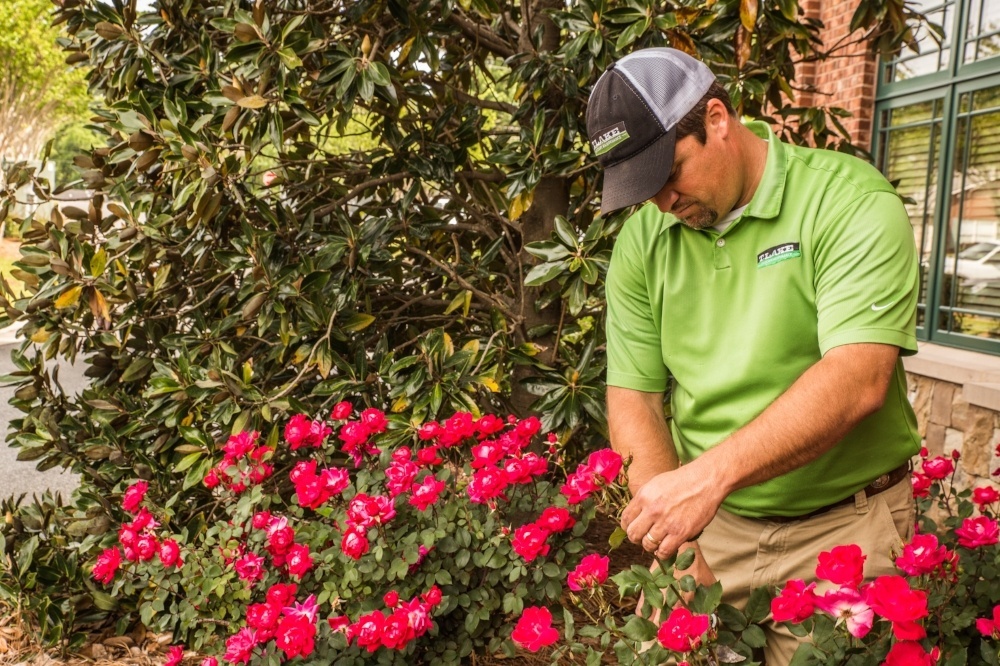“So give it to me straight — how much will this installation cost my company?”
It’s a good question and one that any facilities manager or property owner who is pricing commercial landscape design and installation is justified to ask. But it’s not a simple one to answer.
The most honest and accurate way to answer the cost question is to take the entire life cycle of the installation into account. Most property managers are familiar with the concept of life cycle costing, but many are unaware of just how important it is to consider when budgeting for landscaping.
Landscaping is uniquely dynamic in the world of facilities management. Landscape plants are living organisms with varying life cycles. Each will affect the functioning of the property. Besides aesthetics, they can each impact safety, energy efficiency, human behavior, and the structural integrity of the surrounding buildings in ways that can add to or detract from the final value of the installation over time. The quality and design of hardscape elements will also influence the ultimate cost of an installation dramatically.
Any life cycle cost analysis for a commercial landscaping project needs to take these things mentioned above into account.
Evaluating Life Cycle Costing For Commercial Landscaping
So, what is life cycle costing?
Let’s take a look at some common landscaping elements and some of the ways they can impact the cost of a project over time.
Plant Selection and Commercial Landscape Maintenance
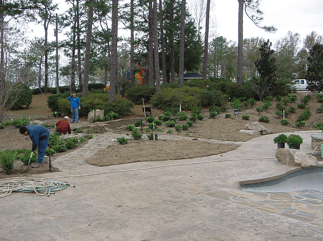 No amount of care will make up for improper plant selection. It’s critical that the plants suit the particular conditions of the property. This requires intimate knowledge of the local area, beyond what might be typical for an entire region or climate zone.
No amount of care will make up for improper plant selection. It’s critical that the plants suit the particular conditions of the property. This requires intimate knowledge of the local area, beyond what might be typical for an entire region or climate zone.
For instance, our climate here in Macon is not the same as in some other areas of the Southeast. Some species that thrive two hours from us struggle here. One good example is maple trees.
Out of town design firms frequently specify them as parking lot trees. They work well for that application in areas north of us, but in our area they experience sunscald, the bark splits, and they die within 10 years. Then you not only have to replace them all, but you’ve set back shade development in your parking lot by ten years.
Other plants might look fine for a while but ultimately grow too large for their location, obstructing views, blocking ventilation systems, or damaging infrastructure. Or they might be prone to wind damage or cause heaving when planted too close to pavement.
Another important thing to take into account is the quality of the plants. A designer may specify a certain tree size, but not all trees of the same size and species are equal. If a tree does not come from healthy stock, it will never be healthy, no matter how much you spend to maintain it. You will get far more value from a tree that comes from a reputable grower, even if it costs a little more up front.
It is far more cost effective to think these things through in advance and choose healthy plants whose life cycles, habits and maintenance needs complement the property and meet the needs of the ongoing budget into the future.
How Irrigation Affects Life Cycle Costing
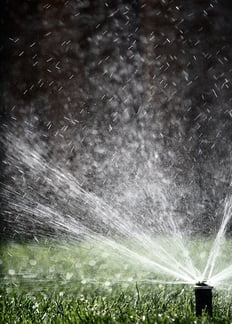 Water use and efficiency of water use is not only a civic responsibility, but it also has provable and realistic cost savings. It’s very common for companies to save upwards of 30% on their landscape water bills simply by implementing water conservation measures.
Water use and efficiency of water use is not only a civic responsibility, but it also has provable and realistic cost savings. It’s very common for companies to save upwards of 30% on their landscape water bills simply by implementing water conservation measures.
We see over watering constantly. It’s very easy to set an irrigation system and forget it. New plantings need regular watering, but mature systems can often thrive with almost no water, especially with smart plant selection.
Over watering doesn’t just waste water. It can also cause problems with fungal growth and damage your plants — even ones that seem to be thriving. Too much water encourages shallow root development. This makes the plants more susceptible to adverse conditions such as drought.
Another very important thing to watch with irrigation systems that can hugely affect your bottom line is safety. Lawsuits related to irrigation systems is extremely common. One lawsuit can easily cost more than the entire cost of your installation.
It’s critical to make sure your sprinklers and rotors are installed correctly, and that you don’t have washouts, trip hazards, drips that lead to icing on walks, or other hazards that could cause someone to trip and fall. Regular inspection and maintenance is also crucial. We recommend at least a quarterly inspection of your entire system.
Cost Considerations For Landscape Lighting
Lighting is another area where thinking things through and making appropriate purchases up front can save you a lot in the long run. For example, LED lighting might cost a little more to install, but LEDs will more than pay for themselves over the lifespan of the bulbs.
Lighting is also a very common element to come up in landscape-related litigation. Making sure the lighting is adequate for the property is critical. We will address this issue more in depth in an upcoming post on pedestrian safety.
The Hidden Costs Of Commercial Hardscaping
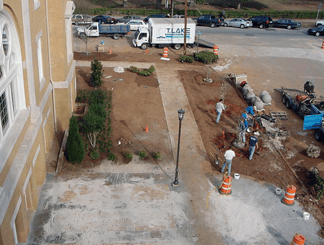 With commercial hardscape installation, it’s important to consider not just its intended use, but also unexpected uses that may happen more often than anticipated. For instance, sidewalks, patios and plazas are thought of as pedestrian areas.
With commercial hardscape installation, it’s important to consider not just its intended use, but also unexpected uses that may happen more often than anticipated. For instance, sidewalks, patios and plazas are thought of as pedestrian areas.
However, it’s very common for service trucks to drive across these areas. If the area is not properly prepared and excavated, this could lead to premature failure of the pavement.
It is also important to note that there are almost always utilities running under hardscaped areas. These include things like water mains, electrical and gas lines, and communications cables. It is almost inevitable that one or more of these will need service at some point during the lifespan of the installation.
How soon will the hardscaped area need replacing, and how easy will it be to repair and replace? These are questions you should be asking, and which may change your concept of what is a good value in that area. For instance, pavers usually cost more to install than asphalt, but they are more durable and can be lifted and replaced without leaving a visible patch.
Another thing to keep in mind is how the hardscaped area will affect stormwater runoff, and what effect it might have on your other infrastructure. For example, using permeable pavers in your parking lot may spare you the expense of building a retention pond.
The biggest cost is in cutting corners. With any hardscape element, shortcuts in quality can result in considerable expense later. You can easily save 30% over the life of the project just by making the right choices up front. In some cases the amount you could save in future replacement and/or maintenance costs by doing it right the first time will add up to more than the cost of the project.
Perhaps the most expensive hardscape option is to purchase an installation that must be redone. We were hired recently to redo a hardscape project that had failed due to poor installation. The cost to take it up and redo the subbase, rebase it, and reinstall the pavement was more than it would have been as a new installation.
Planning For Long Term Value — T. Lake Can Help
Any purchase you make on behalf of your company needs to fit your budget, but upfront cost is only part of the picture. Timely and appropriate maintenance throughout the life of the project — in addition to keeping in mind things that can cause failure or litigation — is critical to keeping costs reasonable.
Anyone familiar with life cycle costing can tell you that the cheapest bid is not always the best value in the long run. A few more dollars spent today can potentially save many more in the future.
Life cycle costing for commercial landscape installations is a complex topic. We have many satisfied customers in the Macon area who can vouch for our ability to assist in the process. To speak to one of our qualified commercial landscape experts, fill out our simple contact form or give us a call at our East Dublin office at 478-272-3878, or call our Macon office at 478-750-7733.
Image: MP rotator
1 Oct 2024

